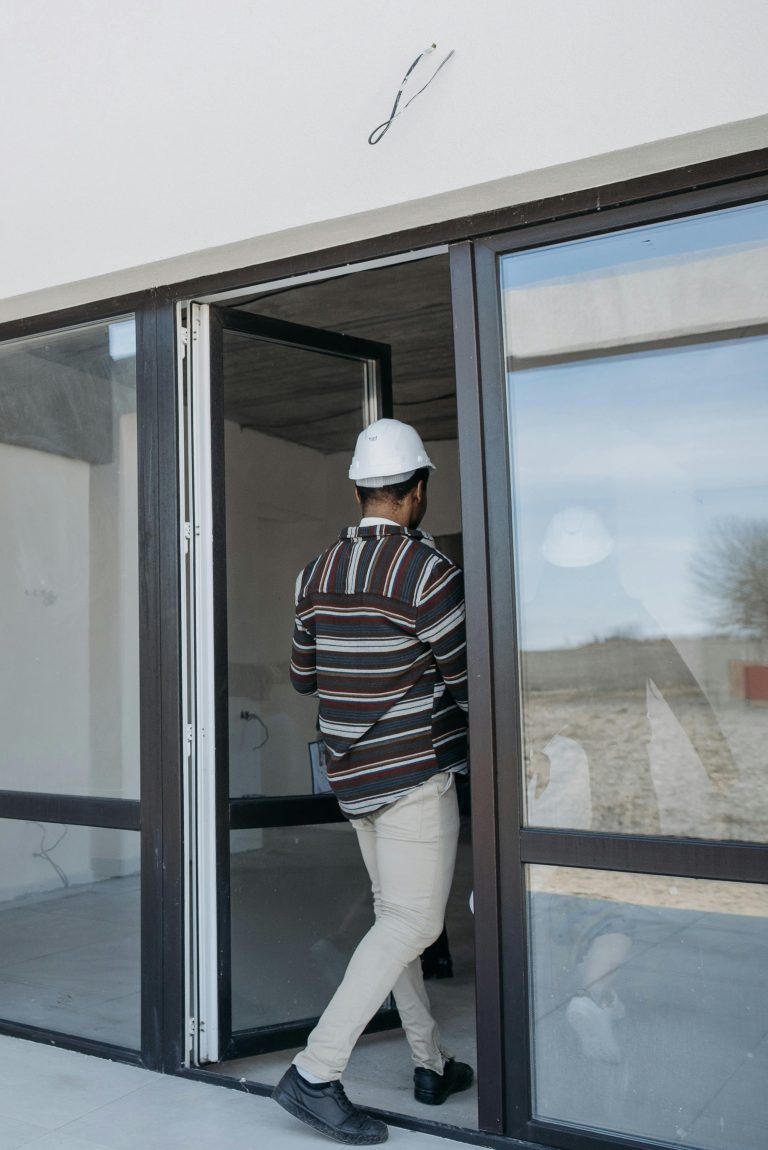Ever dreamed of transforming your outdated kitchen into a modern chef’s haven, or finally adding that extra bedroom your family needs, only to pause when you think about the cost? You’re not alone. Renovations can be exciting, but they also come with a hefty price tag that can leave many homeowners feeling stuck.
That’s where construction loans step in. Unlike standard home loans or personal loans, these specialised financing tools are designed to cover the costs of building or renovating, helping you bring your vision to life without draining your savings.
Understanding how construction loans work can save you time, stress, and even money. It gives you a roadmap for funding your remodel in a way that feels manageable and smart, rather than overwhelming.
In this post, we’ll break down exactly what construction loans are, how they work for renovations, the pros and cons to consider, and practical steps for getting started, drawing on insights from this guide to give you a deeper understanding.
The Basics of Construction Loans: A Quick History and Today’s Landscape
Construction loans aren’t new: they’ve been around for decades as a way to help people fund the building of new homes. Traditionally, they were designed for ground-up construction projects, giving builders and homeowners access to funds in stages as work progressed. Over time, banks and lenders recognised the need for similar financing when it came to major renovations, extensions, and remodels, especially as property values climbed and housing needs evolved.
At its core, a construction loan is a short-term, interest-only loan that provides money for building or renovating. Instead of giving you a lump sum upfront, lenders release the funds in instalments, often called “draws,” based on the progress of the project. This structure ensures that the money is being used directly for construction and keeps both homeowners and lenders accountable.
Today, construction loans are gaining more popularity in the renovation space. Rising property prices and lifestyle changes have pushed many families to improve their current homes rather than move. Lenders have adapted with products tailored specifically to renovation needs, offering flexible terms and sometimes even converting into standard home loans once the work is complete.
By understanding this background, you can see how construction loans evolved from a niche product into a powerful tool for homeowners looking to upgrade without financial strain.
How Construction Loans for Renovations Actually Work
At a glance, construction loans may seem complicated, but once you understand their structure, they’re easier to navigate than you think. The key is knowing how the money is distributed and what conditions come with it.
Here are the main components that make up a renovation-focused construction loan:
- Application and Approval: Just like a traditional loan, you’ll need to apply and get approved. Lenders typically require detailed renovation plans, cost estimates, and timelines before signing off.
- Drawdowns: Instead of a lump sum, the lender pays out funds in stages (drawdowns) as the work is completed. For example, you might get one instalment when demolition is done, another when framing is complete, and so on.
- Interest Payments: During construction, you usually only pay interest on the amount drawn, not the full loan. This can ease cash flow while work is ongoing.
- Final Conversion: Once the project is complete, many construction loans convert into a standard home loan, allowing you to pay it off over time like a mortgage.
All these moving parts work together to give you financial flexibility during renovations. They’re designed to match the natural rhythm of construction, where expenses come in stages rather than all at once.
For example, imagine you’re renovating your bathroom and kitchen at the same time. Your lender might release funds after plumbing rough-ins are complete, then again after cabinets are installed. This not only keeps the project funded, but also ensures progress is being monitored and money is used responsibly.
Understanding this structure makes the process feel less intimidating and helps you plan your remodel more confidently.
Why Consider a Construction Loan for Your Remodel?
Construction loans can be game-changing if you’re looking at major renovations. They’re designed to solve some of the most common hurdles homeowners face when funding upgrades.
Here are the biggest benefits:
- Tailored for Renovations: Unlike personal loans, these are built specifically to fund staged construction costs.
- Interest Savings: Since you’re only paying interest on drawn funds, you’re not being charged for money you haven’t used yet.
- Accountability and Oversight: Lenders often require inspections before releasing funds, ensuring contractors stay on track.
- Potential to Add Value: By financing smart renovations, you can increase your property’s value and equity in the long run.
- Flexible Conversion: Once renovations are complete, many loans can roll into a mortgage, giving you long-term repayment options.
Taken together, these benefits make construction loans an appealing option if you’re serious about a remodel but don’t want to drain your savings or rely on high-interest debt.
Consider the example of a family who added a second storey to their home. Instead of moving into a bigger house, they financed the renovation with a construction loan, kept interest manageable during the build, and converted the loan into a mortgage afterward. The result: more space, higher home value, and financial stability.
The Challenges and Drawbacks You Should Know
Of course, no financing option is perfect. Construction loans come with their own set of challenges that you’ll want to weigh carefully.
Some common drawbacks include:
- More Paperwork: Lenders require detailed plans, quotes, and inspections, which can feel time-consuming.
- Stricter Approval Criteria: You may need a strong credit score and equity in your home to qualify.
- Variable Costs: If your renovation goes over budget, you may need to cover the gap or request adjustments.
- Short-Term Nature: These loans are typically shorter in duration, meaning you need a clear plan for repayment or conversion.
It’s important not to let these potential hurdles discourage you. Many misconceptions exist—for example, some people assume you need to be a professional developer to qualify, which isn’t true. Others think the process is riskier than a standard loan, when in reality, the staged funding often reduces financial risk.
The key is knowing how to manage these challenges:
- Get multiple quotes from builders to minimise budget blowouts.
- Work with lenders experienced in renovation loans.
- Have a contingency fund for unexpected costs.
- Understand the conversion process before starting.
With the right preparation, most of these challenges can be overcome, making construction loans a safe and practical option.
How to Apply for and Manage a Construction Loan
Knowing the theory is one thing, putting it into practice is another. Here’s how you can get started with a construction loan for your remodel.
Step-by-step process:
- Assess Your Renovation Plans: Define your goals, scope, and budget clearly while considering the cost of essential building materials to keep everything realistic.
- Gather Quotes: Collect detailed estimates from licensed builders or contractors.
- Apply with a Lender: Submit your plans, financials, and application.
- Approval and Loan Setup: Once approved, your loan is structured with agreed drawdowns.
- Monitor and Draw Funds: Funds are released as work progresses, with inspections where required.
- Completion and Conversion: Once the renovation is complete, the loan typically converts to a standard mortgage.
Tips for success:
- Start small and build momentum with manageable projects.
- Don’t be afraid to ask questions, your lender should explain each stage.
- Involve your builder in the planning to avoid delays.
- Track expenses closely and celebrate milestones along the way.
Helpful resources:
- Online loan calculators to estimate repayments.
- Renovation project management apps for tracking costs.
- Professional mortgage brokers who specialise in construction loans.
The most important step is simply getting started. Even if the process feels overwhelming at first, breaking it down into stages makes it achievable.
The Future of Renovation Financing
Like many areas of finance, construction loans are evolving with new technologies and trends. Staying aware of these shifts can help you make smarter choices for your remodel.
Some key developments to watch:
- Digital Applications: More lenders are moving to fully online application and approval processes.
- Green Renovation Incentives: Expect more financing products tied to energy-efficient upgrades.
- Flexible Loan Structures: Hybrid products may offer a mix of fixed and variable terms to suit diverse needs.
- Faster Drawdowns: With digital verification, fund release times are getting shorter.
These trends signal a future where renovation financing is easier, faster, and more accessible.
The impact on homeowners could be significant:
- Homeowners: More choice and less hassle in applying for loans.
- Builders/Contractors: Faster payments and smoother project timelines.
- Lenders: A chance to compete by offering more tailored products.
By staying proactive and informed, you can position yourself to take advantage of these opportunities when planning your next remodel.
Wrapping It All Up
Construction loans may feel complex at first glance, but they’re really just a structured way to fund renovations in stages. This post has covered their history, how they work, the benefits, the drawbacks, and the practical steps you can take to apply and manage one successfully.
Key takeaways:
- Construction loans release funds in stages, matching your renovation timeline.
- They can save you money and stress compared to lump-sum or high-interest options.
- Preparation, planning, and choosing the right lender are the keys to success.
Ultimately, construction loans offer a practical pathway to upgrading your home without sacrificing financial peace of mind.
Ready to explore whether a construction loan is right for you? Start by reviewing your renovation plans and speaking with a lender who specialises in these loans. And if you’ve been through the process yourself, we’d love to hear your tips and stories in the comments below.
Final Thoughts
Renovating your home is a big step, but it doesn’t have to be a financially overwhelming one. With the right financing in place, you can turn your dream project into a reality while keeping your budget intact.
Here are a few ways you could continue exploring:
- Research lenders who offer renovation-specific construction loans.
- Talk to your builder about realistic cost estimates.
- Look into government incentives for sustainable upgrades.
- Try a small project first to build confidence with the process.
We’d love to hear from you—what part of construction loans feels most confusing or helpful to you? Share your thoughts in the comments and let’s keep the conversation going.
Thanks for joining us in this guide. Until next time, happy renovating!


